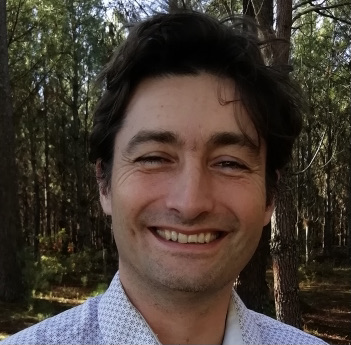Outstanding amount
499,428.12 €
ESG rating
50.60 %
PERF YTD
– 3.62 %
Volatility
13.20 %
Risk level
6/7
Macroeconomic summary
October 2023
The month of September did not fail to live up to its reputation as one of the most frequent bearish months. The S&P500 and STOXX Europe 600 indices declined by 4.90% and 1.75%, respectively over the month. The cost of credit and the central banks’ choice to prioritize the control of inflation over economic growth are the main reasons behind the risk aversion. Alternatives to equity investments have consequently become more attractive.
The bond market meanwhile experienced significant tightening over the month. The US 10-year yield crossed the psychological threshold of 4.50%, while simultaneously the US 2-year yield exceeded 5%. A similar situation was observed in Europe, with the French OAT now standing at a rate of 3.40%. At Colibri AM, we believe that the French 10-year yield could potentially rise to 3.70% in the short term. It’s worth noting that the spreads between the Bund and the 10-year bonds of Italy, Spain, and even the United States are at their highest levels since the past six months.
Regarding the foreign exchange market, the Dollar Index (the US dollar against a basket of international currencies) continues its upward trend and gained nearly 2.50% over the month. This trend clearly signals investors are increasingly becoming risk-averse and are shifting their investments towards defensive assets. The US dollar is a safe haven among currencies.
With respect to commodities, there was a significant rise in the WTI crude oil barrel, which went as far as testing $95 before retreating to $91, recording a performance of over 8%. On the other hand, the situation is entirely different for the ounce of gold, as the break below the lower boundary of the horizontal channel defined by the $1900/$2000 zones led to a further downturn, with the “barbarous relic” losing 4.70% for the month. The initial support level is located at $1800.
Management comment
The turbulence in the equity markets continues. The Alpha Equity World ESG fund lost -5.5% versus the Bloomberg World Large & Mid Cap Index fall of -2.8%. The benchmark mirrors the widely followed MSCI All Country World Index. The three largest detractors to the performance of the fund hold emerging market exposure (First Quantum Minerals, Becle SAB, Sociedad Quimica Y Minera Chile). The three biggest contributors to performance were Deckers Outdoor, T-Mobile US and Europris. The MSCI Emerging Markets Index interestingly lost -3.9% over the month.
First Quantum Minerals plunged (-51%) after Panama’s President Laurentino Cortizo pledged a public referendum on whether the company’s 20-year Cobre Panama mine contract should be cancelled. The open pit mine is one of the world’s largest sources of copper (1.4% of global supply), represents roughly half of First Quantum’s 750,000 tons annual production and accounts for almost 5% of gross domestic product. The mine has directly and indirectly created more than 40,000 jobs with more than $10 billion invested.
Thousands of protesters took to the streets of Panama City since last month after congress approved the renegotiated contract. Mining has long been controversial over its environmental impact and perceptions of corruption, but the protests have also been fueled by high living costs and an unpopular government. Young Panamanians are angry with inequality in the country and worry about climate change as the Panama Canal suffers record droughts.
Beginning November, rating agency Moody’s downgraded Panama’s debt to Baa3 from Baa2 (the lowest investment-grade rating), citing structural fiscal problems but also noting social and political tensions. If the mine contract is revoked, the country will likely lose its investment-grade rating, as lower trust in the country’s institutional framework would likely drive lower investment and lower medium-term economic growth.
Becle, S.A.B. de C.V. (-26%) missed its 3Q23 results across the board with a higher-than-expected pressure on the gross margin of 48.1% (versus 54.1% 3Q22). Sales declined by -8.5% yoy. Foreign exchange impacts and higher input costs were partly offset by price increases, favorable change in geographic mix and the recent decline in agave prices. Total volumes decreased by -4.5% year-over-year, which was mainly explained by -23.5% volumes in Mexico, largely related to the non-alcoholic category. Management also flagged the economic softness in EMEA as another driver of the weaker results.
Sociedad Quimica Y Minera Chile (SQM) has additionally been weak of late (-19%). Plummeting lithium prices is inducing western lithium producers to scale back large capital expenditure programs, which will reduce future growth. Lithium prices have dropped more than 70% this year to just over $22,000 a ton on weak electric vehicle (EV) demand in China and the battery supply chain is working through stockpiled material rather than buying fresh material. Rival Chinese lithium producers are meanwhile pushing ahead with development plans, despite the weak market. Western lithium producers are consequently confronted with a strategic dilemma and will face market share losses. Demand for lithium is forecasted to increase fourfold by 2030.
Analysts estimate the industry’s marginal cost of production range between $15,000-$20,000 per metric ton, which is an all-in sustaining cost basis. If lithium prices reached the marginal cost of production structure, the level of $15,000 per metric ton would unlikely persist for long, as this would cause high-cost supply to shut down and exit the market, leaving it undersupplied and boosting prices in fairly short order. SQM only uses 22.5 liters of fresh water plus 25.2 liters of brine to produce 1 kilogram of lithium carbonate equivalent, which comes to half the carbon footprint for production of lithium in Australia, making the company competitive. China supplies 20% of lithium globally, Australia 44% and Chile 28%. SQM will publish its quarterly results November 15th.
While LG Energy Solution, Tesla and General Motors are warning high interest rates will impact EV plans, global sales in 2023 are still on track to reach almost 15 million units (+40% growth yoy). Strong EV demand and weak lithium pricing most likely points to future volatility.
Deckers Outdoor (+16%) posted strong fiscal year 2Q24 results with a sales growth rate of +25% yoy and a gross margin improvement of +5.20% to 53.4%. The UGG and HOKA footwear brands showed strong yoy growth of +28% and +27% respectively. The company increased full year 2024 sales guidance to $4.025 bln from $3.980 bln and it appears to be a conservative estimate.
T-Mobile US (+2.9%) printed slightly better than expected 3Q23 results regarding top line growth and profitability, which confirm the integration of the Sprint’s technological infrastructure remains on track. Management increased its 2024 operating profit guidance. The company’s leader positioning on small markets and rural areas is paying off, which collectively represent 40% of the US population.
The company is progressing well with the expansion of its network coverage, particularly in the mid-band spectrum, which is a range of frequencies used for 5G technology. As of now, T-Mobile’s network covers 300 million people with mid-band spectrum, surpassing its year-end goal ahead of schedule. In comparison, Verizon and AT&T have mid-band coverage for 230 million and 190 million people, respectively
T-Mobile achieved this expansion by utilizing the 2.5GHz spectrum it acquired from Sprint. The company is also planning to deploy additional frequencies (3.45 GHz and 3.7-4.2 GHz) later in the year, which is expected to increase its 5G spectrum from 150 MHz to approximately 200 MHz. The total amount of spectrum (capacity) a mobile carrier has is crucial for delivering faster and more reliable wireless services. This move positions T-Mobile to maintain a leading position in 5G technology, even as competitors enhance their mid-band deployments.
Europris’ (+1%) 3Q23 results showed sales in-line with expectations and beat consensus on gross margin and EBITDA (earnings before interest, taxes, depreciation and amortization) by +2.49% and +3.59% respectively. Like-for-like sales growth was +3.8% yoy. For the first time in ten years, Europris’ retail outlets are supplied from one single warehouse in Moss, which supports the efficient operating strategy.
Year-to-date, the total retail market has increased sales by +1.9%, which is significantly below inflation this year, implying there is a volume decline. The winners in the market are essential goods, with groceries posting growth of 7.9%. Variety retail are growing 3.8%, while Europris is taking market share in this part of the market with 5.3% growth.
liquidative value
07/12/2023
Part RC
95.39 €
Part I
96,894.80 €
Source : CM-CIC Asset management
Fund management team
The two-fund manager team removes the key-person-risk and ensures continuity of Colibri AM’s investment process for the long run.
While each investment is validated by both fund managers (via ESG trajectory screening, fundamental analysis, portfolio construction), Marc et Frédéric are each able to carry out every step of the investment process independently. The bottom/up investment process largely focusses on choosing the best companies for each sector of the universe.
Frédéric Hamm

Marc Frippiat

Key information
The information presented above does not constitute either a contractual element or an investment advice. Past performance is not a reliable indicator of future performance. Management fees are included in the performance. Access to the products and services presented here may be subject to restrictions for certain persons or countries. Tax treatment depends on individual circumstances.
This fund investment promotes environmental, social and governance (ESG) criteria within the meaning of Article 8 of Regulation (EU) 2019/2088 on sustainability reporting in the financial services sector (the so-called “SFDR Regulation”). It does not aim to be a sustainable investment. It may invest partially in assets with a sustainable objective, for example as defined by the EU classification.
This fund investment is subject to sustainability risks as defined in Article 2(22) of the Regulation (EU) 2019/2088 on sustainability reporting in the financial services sector (the “SFDR Regulation”), by an environmental, social or governance event or condition which, if it occurs, could result in an actual or potential negative impact on the value of the investment.
